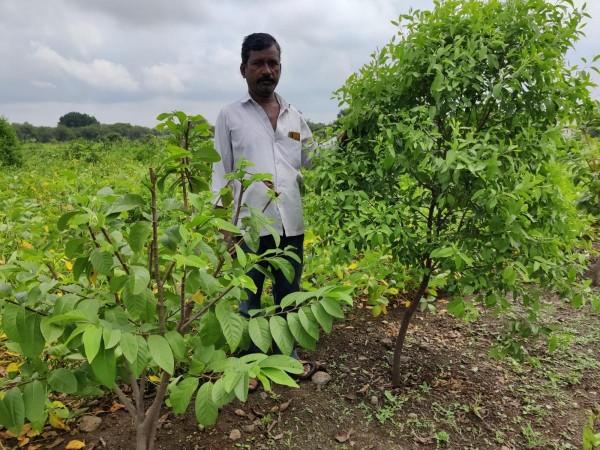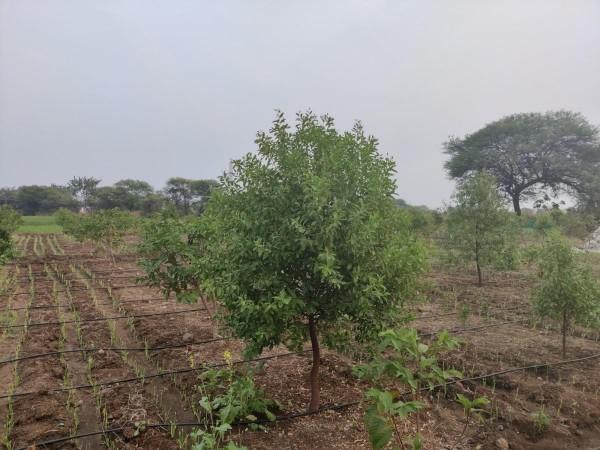
Falgun Biradar, an agriculturalist from Maharashtra, is not only set to earn and build up a sizeable pension fund based on his crop profits upon retirement but also contributes to climate adaptation farming techniques. His farming career has been transformed by The Art of Living's training, which promotes natural farming practices and agroforestry, that involves lining agricultural lands with tree plantations.
The Art of Living is promoting natural farming techniques across India, which promises low expenditure and improved productivity and profits for the farmers.
The role AoL played in Falgun Biradar's life
Based in Wadmurambi, Deoni Taluka, Biradar has been undertaking 'natural farming' for a period of over 4 years. He decided to shift from chemical farming to more natural techniques, primarily to adapt to extreme weather changes.
"My village is drought hit. We have water only till Dipawali, after that, there is no water in our borewells all year. We had lot more water available 10 years ago, but now there is none and farmers are suffering," Biradar says.
Previously, Biradar Falgun had been practicing "chemical farming on his 5 acres of land where he was growing lentils and one vegetable type, making Rs. 50,000 a year." While talking to International Business Times, the farmer mentioned that he was the only one in his village who has adopted the 'Art of Living' way of farming and is trying to motivate other farmers to take this up as well.
The training is conducted by the 'Art of Living' team onsite on a farmer's land. It is led by agricultural trainer and expert Mahadev Gomare, who is a farmer himself.
"We are encouraging farmers to plant trees. One fully harvested sandalwood tree can give you around Rs. 30 lakh. What if you planned and grew it on your farm? Only 100–150 trees can give a farmer around Rs. 5–6 crore," Gomare said.

Emphasizing the changing tides in agriculture, he says that in the past there was "no dependency on external factors such as chemical fertilizers, and pesticides but things changed with the green revolution and other farming policies."
In line with the agroforestry and organic approach, Biradar has supplemented his income by growing various types of trees, including custard apple trees. This has also guaranteed him financial security in the long term. He continues such cultivation alongside crop staples such as "soya, arhar, jowar and others."
Climate adaptation is a must for farming
The Art of Living has trained over 22 lakh farmers in India in natural farming methods and over a lakh farmers in Maharashtra are equipped with these techniques along with training in agroforestry. It has also collaborated with the Maharashtra government in December 2023 to "ensure that farmers will return to natural, traditional farming, and avoid the use of harmful chemicals."
This is a powerful example of empowering farmers as well as addressing changing climatic trends and demands of food security.
Worldwide consensus recommends that farmers make the transition to natural methods like agroforestry in order to thrive in the face of climate change. This method is especially useful in drought-hit areas. It has been estimated that by 2025, India will experience an acute water crisis, if conditions continue. Many reports stated that parts of Maharashtra saw a deficit of an estimated 19 per cent in rainfall during the last monsoon season. With increasing temperatures and diminishing rainfall, these challenges can be solved using sustainable, climate-resilient and natural farming practices.










